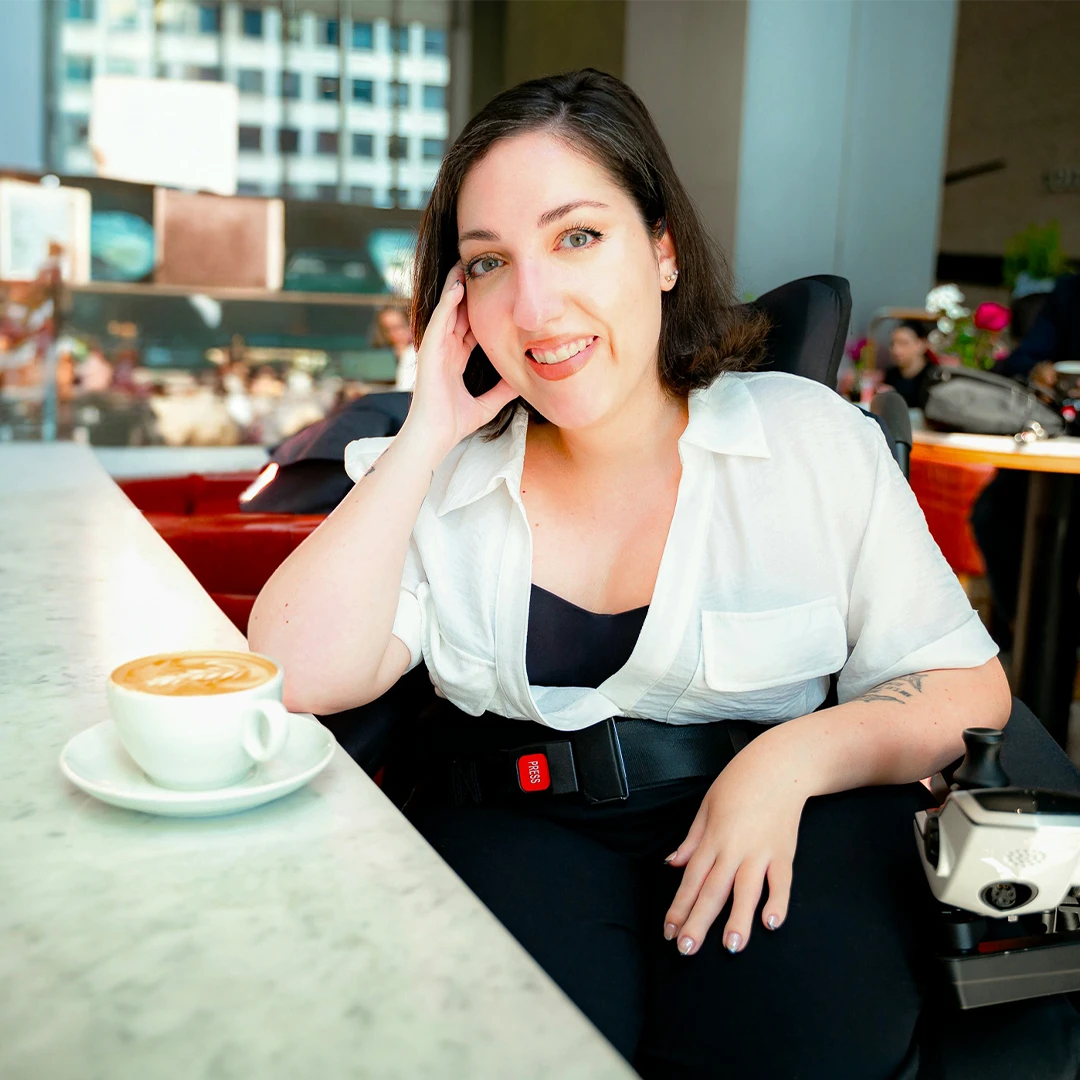discourse
Jess focuses on disability-led practices. Balancing lived experience with community spaces in her discussions.
Image: A white disabled woman smiles with a cappuccino. At a counter in her power wheelchair. She has green eyes, and brown-silver hair. Wearing a white collared shirt over a black jumpsuit. Photo and editing by Garry Tran.

